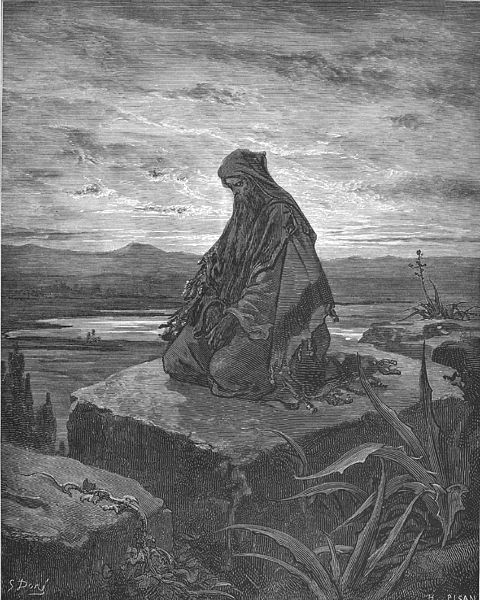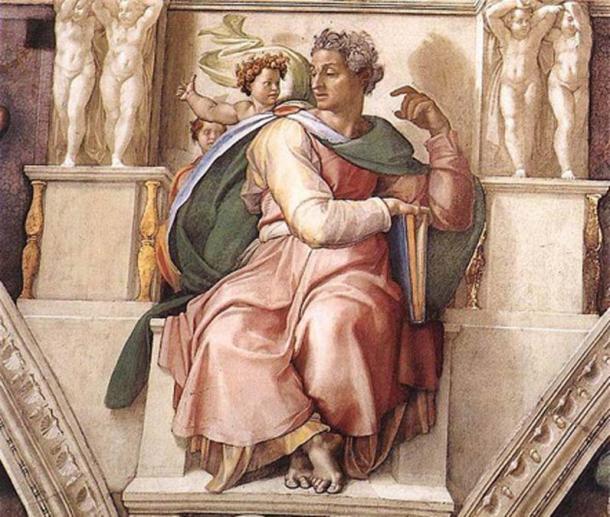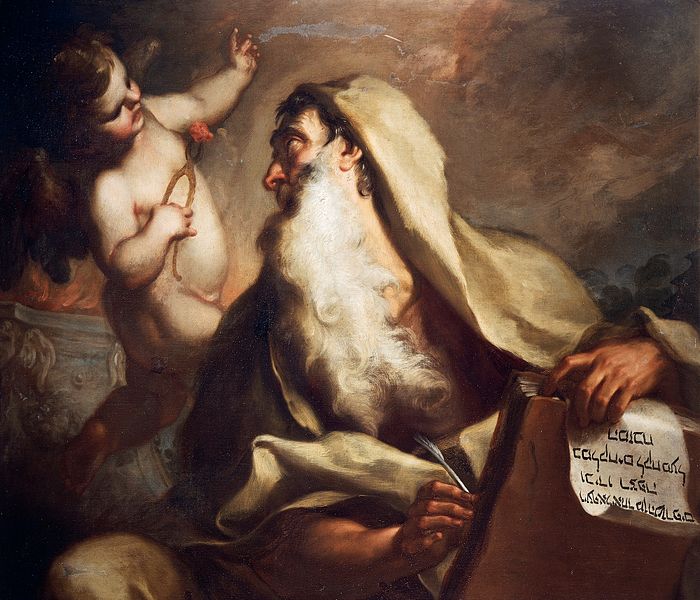
The Fifth Evangelist
Isaiah (Hebrew for “The LORD is Salvation”) was an Old Testament prophet after whom the biblical Book of Isaiah is named.
Sometimes called “the fifth evangelist,” Isaiah is often said to have written the “fifth Gospel,” a testament to the unusually high number of times that Isaiah is cited in the New Testament and to its crystal clear Christological prophecy, such as the famous text in in Isaiah 7:14 that articulates Jesus’ forthcoming birth.
Although not much is known about Isaiah’s personal life, many believe that he might have come from an aristocratic family, in part because he had many dealings with kings and was highly aware of the public affairs of the time. His writings also seem to indicate that he was well educated, as he exhibits some of the most eloquent classical Hebrew in the entirety of Scripture. He was a contemporary of the prophets Amos, Hosea, and Micah.
Isaiah prophesied in the Southern Kingdom during the eighth century B.C., one of the most critical centuries in the life of the Old-Testament Church. The first half of this century was a time of relative peace and stability, but this prosperity caused God’s people to forget about their Lord. It was a time of rampant idolatry and wealth, sexual immorality, false prophets, and societal decadence. In the latter half of this century, Isaiah addressed these contemporary issues, calling out Judah’s sinfulness and trying to lead her people back towards a reverence for God.
Besides foreseeing society’s impending collapse and mankind’s need for God, Isaiah also foretold the ministry of St. John the Baptist (Isaiah 40) and the miracles that Jesus would perform on earth (Isaiah 35). Additionally, he prophesied the death and resurrection of Jesus (Isaiah 52 and 53) almost 700 years before Christ would be born to the Virgin Mary!
According to tradition, Isaiah was martyred by being sawn in half under the orders of Manasseh, the fourteenth king of Judah. It is thought that Hebrews 11:37, “They were stoned; they were sawed in two; they were put to death by the sword,” is a reference to his death. Although no one can be certain that this alludes to Isaiah’s death specifically, one can find comfort in the fact that this whole chapter describes God’s faithfulness to those who faced death for their confession of the Christian faith.

A Brief History
Assigning days on the calendar to the saints of the Old Testament has not been a universal custom in the history of the Church. The calendar of The Lutheran Hymnal, for example, includes not a single saint from before the time of our Lord’s earthly ministry.
Yet the practice of annual commemorations of Old Testament saints is not without precedent in Lutheran history: the sanctoral calendar of Wilhelm Löhe, a renowned Lutheran pastor of the nineteenth century who was instrumental in the early years of the Missouri Synod, contains various saints from before our Lord’s Incarnation. Commemorating Isaiah on July 6th goes back at least as early as this important Lutheran calendar.
Lutheran Worship, the Missouri Synod’s hymnal that was released in the 1980s, sought to reflect saints from a broader range of historical eras in its sanctoral calendar. Subsequently, it often commemorates Old-Testament saints like Isaiah on the same days they were assigned in Löhe’s calendar.
This holiday, then, while having historical precedent of more than a century, is relatively new as an official feature of our Synod’s calendar. But regardless of how far back this tradition may go, it is a great opportunity to remember one of our Lord’s faithful servants by whom he spoke to his people and told them of their coming salvation in our Lord Jesus.

Collect
O Almighty God, who hast knit together Thine elect in one communion and fellowship in the mystical body of Thy Son Jesus Christ, our Lord: grant us grace so to follow Thy blessed saints in all virtuous and godly living, that we may come to the unspeakable joys which Thou hast prepared for those who unfeignedly love Thee; through the same, Jesus Christ, Thy Son, our Lord, who liveth and reigneth with Thee and the Holy Ghost: ever one God, world without end. Amen.
Lessons
Resources
Issues, Etc. interview with the Rev. Dr. Andrew Bartelt on St. Isaiah
Propers found in Daily Divine Service Book: A Lutheran Daily Missal, edited by the Rev. Heath Curtis
References:
1. Encyclopedia Britannica entry on St. Isaiah.
2. Weedon, William C. Celebrating the Saints: The Feasts, Festivals, and Commemorations of Lutheran Service Book.Concordia Publishing House. 2016.
3. Brauer, James L. “The Church Year” in Lutheran Worship: History and Practice. Concordia Publishing House. 1993.
4. Wilhelm Loehe’s Martyrology
Images:
1. Prophet Isaiah, Paul Gustave Doré, France, 1866.
2. Isaiah, Michelangelo di Lodovico Buonarroti Simoni, Italy, 1509.
3. Prophet Isaiah, Antonio Balestra, Italy, c. 1700-1799.



